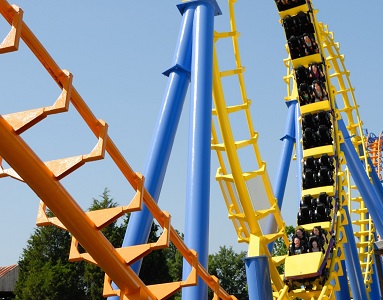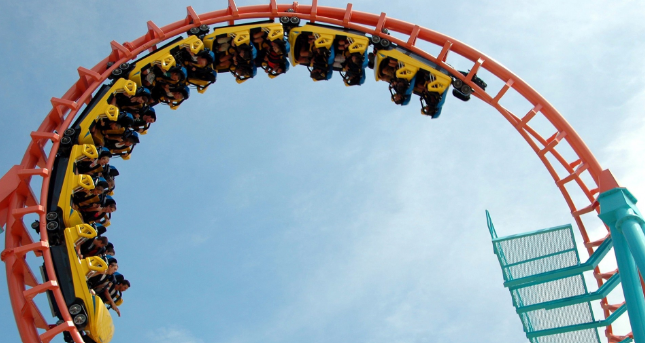What are the forces experienced on a roller coaster?

Roller coasters are thrilling and exhilarating fairground rides that offer an unforgettable experience for all participants. As you twist, turn, and zoom through loops and drops, your body is subjected to various forces that add to the excitement and adventure of the ride. Understanding these forces can help you appreciate the engineering behind these thrill and white knuckle rides and the sensations they always bring by the bucketload.
At We Are Tricycle, we bring the joy of roller coasters and other funfair rides to events across the UK, ensuring everyone gets a taste of the thrill. Find out about some of the forces that act on the rollercoaster carriage below, and contact us if you'd like any further information.
- Gravity (G-Force): Gravity is the force that pulls everything toward the centre of the Earth. On a roller coaster, you feel the sensation of being pressed into your seat when accelerating down a steep drop or when going through loops. This is due to the force of gravity acting on your body, creating what's known as positive G-forces.
- Inertia: Inertia is the tendency of an object to maintain its state of motion. When a roller coaster suddenly changes direction, your body wants to keep going in a straight line, resulting in lateral G-forces. These forces push you against the sides of the coaster and can make you feel as if you're being pulled to the outside of a curve.
- Centripetal Force: When a roller coaster goes around a curve, the centripetal force keeps it on the track and prevents it from flying off in a straight line. This force is directed toward the centre of the curve and causes riders to feel pushed to the side of the curve. People often think it is 'centrifugal force' that pushes them into their seats when they go around a loop, but this is also centripetal force - find out more about how rollercoasters don't fall out of loops here!
- Airtime: Also known as negative G-forces, airtime occurs when the rollercoaster carriage reaches the crest of a hill, and riders experience a brief moment of weightlessness. This creates the sensation of floating and is a favourite among thrill-seekers.
- Vertical G-Forces: Vertical G-forces are experienced when going through steep drops or vertical loops. These forces push riders into their seats and can create a feeling of intense weight on the body.
- Friction and Air Resistance: The rollercoaster gradually slows down after coasting to the top of the hill due to friction, including air resistance. The wheels running against the carriage and the air blowing against the carriage and through the rider's hair creates a drag on the rollercoaster, gradually slowing the carriageway down.
- Deceleration Forces: When a roller coaster comes to a stop, brakes are applied to slow it down gradually. The deceleration forces push riders forward in their seats, signalling the ride is over and it's time to queue up for another go!
At We Are Tricycle, our roller coasters and all of our fairground rides are designed with the utmost safety in mind. Each funfair ride and amusement is thoroughly inspected and maintained to ensure a safe and enjoyable experience for all guests.
Force your guests to have fun at your next event with our range of rollercoasters for hire! If you need more information about roller coasters, check out our rollercoaster guides and FAQs to see more.
